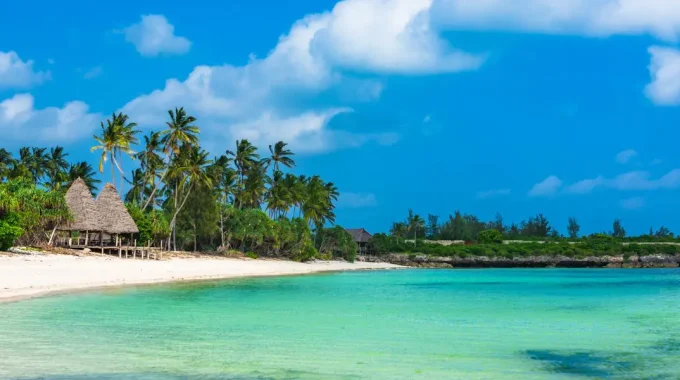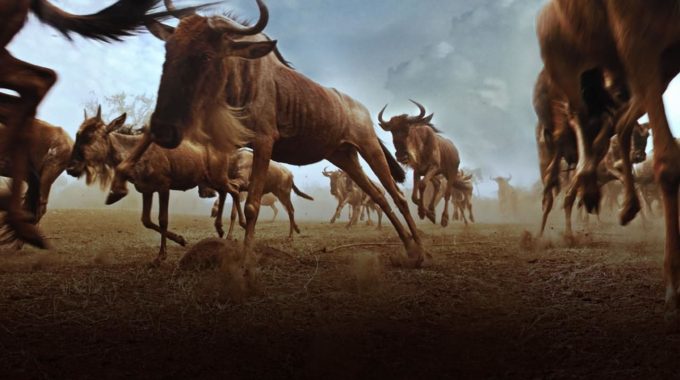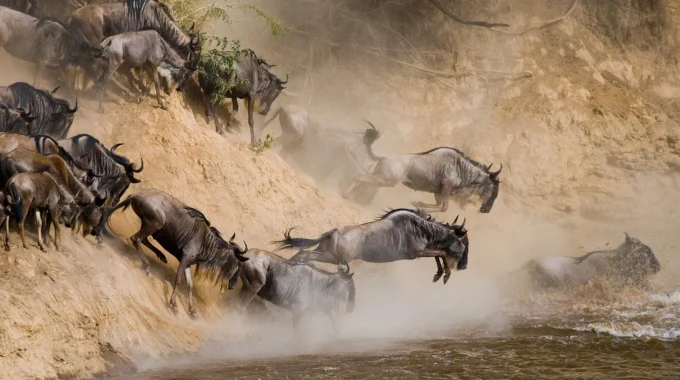Zanzibar, an exotic island paradise in the Indian Ocean, is a dream destination for many…
What is the difference between the Serengeti and the Sahara?
What is the difference between the Serengeti and the Sahara? – The Serengeti and the Sahara are two very different environments in Africa, and they contrast in almost every way, from climate to wildlife to geography. Here are the main differences:

1. Geography and Location
- Serengeti: The Serengeti is a vast savanna ecosystem located primarily in northern Tanzania and extending into southwestern Kenya. It’s known for its flat, grassy plains and scattered trees, especially acacias. It is part of a larger region called the Serengeti-Mara ecosystem.
- Sahara: The Sahara is a desert that spans much of North Africa, covering parts of countries like Algeria, Egypt, Libya, Morocco, Tunisia, Chad, Niger, and others. It is the biggest hot desert in the world, with vast sand dunes, rocky plateaus, and little vegetation.
2. Climate
- Serengeti: The Serengeti has a tropical savanna climate, with distinct wet and dry seasons. Although elevation helps to moderate temperatures, it can get quite hot during the day. The region receives significant rainfall (about 500–1,500 mm per year), particularly during the wet season, which supports its rich biodiversity.
- Sahara: The Sahara has an extremely arid desert climate, with very little rainfall (less than 3 inches annually in many places). Temperatures can reach extreme highs during the day (up to 50°C or 122°F) but can drop sharply at night due to the lack of humidity.
3. Flora and Fauna
- Serengeti: The Serengeti is teeming with wildlife. It is home to a wide variety of animals, including the “Big Five” (lion, elephant, buffalo, leopard, and rhinoceros), as well as large herds of wildebeest, zebras, and gazelles. The Serengeti is particularly famous for the Great Migration, where millions of herbivores travel in search of water and fresh grazing land.
- Sahara: The Sahara is much less hospitable to life. It has a few desert-adapted animals, such as camels, sand foxes, desert rats, and some reptiles like lizards and snakes. Birds like the Sahara horned viper or Fennec fox are well adapted to the desert’s extreme conditions. Vegetation is sparse, consisting mostly of drought-resistant plants like cacti, grasses, and shrubs.

4. Human Activity and Culture
- Serengeti: The Serengeti has been home to indigenous tribes like the Maasai, who have lived in the region for centuries, and it also attracts thousands of tourists each year for safaris. It is a UNESCO World Heritage site and a protected area to conserve wildlife.
- Sahara: Nomadic groups like the Tuareg and Bedouins, who have adapted to the arid desert lifestyle, have historically inhabited the Sahara. Today, parts of the Sahara are sparsely populated, with some major cities like Cairo and Algiers on the periphery.
5. Role in the Environment
- Serengeti: The Serengeti plays a key role in supporting biodiversity and ecosystems. It is crucial for the survival of many species, particularly those that migrate. The ecosystem provides food for large predators and herbivores and helps to maintain the ecological balance of the region.
- Sahara: The Sahara, while largely barren, is important for global weather patterns. The winds from the desert carry dust and sand across continents, influencing atmospheric conditions and even contributing to the fertilization of the Amazon rainforest.
Summary:
- Serengeti: A tropical savanna with abundant wildlife and seasonal rainfall, known for the Great Migration and diverse ecosystems.
- Sahara: An arid desert with extreme temperatures, minimal rainfall, and sparse life, largely inhospitable to most forms of life.
So, what is the difference between the Serengeti and the Sahara? While the Serengeti is a vibrant and biodiverse region, the Sahara is one of the harshest, driest environments on Earth!



